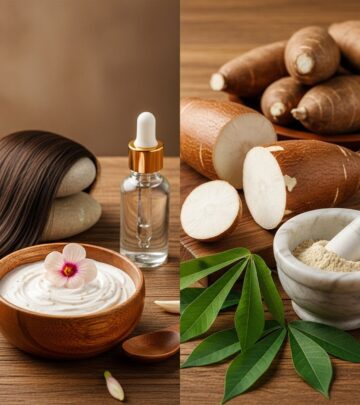The Origin of Citronella: History and Tradition of a Natural Remedy
Explore the journey of citronella from its ancient roots in Asia to its modern uses as a trusted natural remedy and insect repellent.

The Origin of Citronella: A Fragrant Legacy Across Centuries
Citronella has enchanted people for generations with its invigorating lemony scent and enduring reputation as a natural remedy, particularly for its insect-repelling powers and purifying qualities. This captivating grass, native to tropical Asia and cultivated worldwide, has woven itself into the tapestry of folklore, medicine, and everyday life.
What is Citronella?
Citronella refers to several aromatic grasses in the Cymbopogon genus, especially Cymbopogon nardus (Sri Lankan citronella) and Cymbopogon winterianus (Javan citronella). These grasses grow in dense clumps and are prized for their essential oils, which are extracted from leaves and stems. Citronella is often confused with lemongrass; both belong to the Cymbopogon family, but citronella’s pseudostems are reddish, while lemongrass’s are off-white.
Historical Background of Citronella
Citronella’s journey began in the lush tropical regions of Asia, notably Sri Lanka and the Indonesian archipelago. Ancient civilizations valued it for:
- Fragrance and Perfumes: Used in perfumes as early as the mid-19th century in France, citri’s rich lemon aroma was highly sought after.
- Traditional Medicine: Embedded in Ayurveda, Traditional Chinese Medicine, and local healing practices in China, Sri Lanka, and Indonesia. It aided in treating digestive complaints, inflammation, and skin diseases.
- Aromatic Rituals and Deodorizing: Employed for cleansing spaces and as a natural deodorizer, both spiritually and physically.
Trade routes and exploration helped disperse citronella’s reach, making it a staple in medicinal, culinary, and spiritual traditions worldwide.
Citronella in Folklore and Tradition
- Purification: Many cultures burned citronella leaves or oil to purify spaces and promote harmony.
- Protection: Citronella was often carried or worn as an amulet believed to shield against negative forces or misfortune.
- Insect Repellent: People placed citronella branches around homes and outdoor areas to drive away mosquitoes and fiery pests.
Its enduring association with protection and cleansing made citronella both a practical and spiritual asset.
Botanical Identity: Citronella Varieties
| Type | Scientific Name | Origin | Notable Oils |
|---|---|---|---|
| Sri Lankan Citronella | Cymbopogon nardus | Sri Lanka | Citronellal (6%), Geraniol (23%) |
| Javan Citronella | Cymbopogon winterianus | Indonesia | Citronellal (39%), Geraniol (25%), Citronellol (13%) |
| Citronella Geranium | Pelargonium ‘Citronella’ | Africa/Asia (cultivated) | Aromatic, less essential oil for repellent |
Note: The species Pelargonium citrosum is not botanically valid; actual citronella geraniums are cultivars of Pelargonium graveolens. True insect-repellent efficacy depends on the variety and concentration of active ingredients like citronellal, geraniol, and citronellol.
Traditional Medicinal Uses
Citronella’s essential oils have been employed in multiple healing systems:
- Ayurveda: Used for digestion, respiratory health, inflammation, and promoting mental clarity.
- Traditional Chinese Medicine: Applied for skin conditions, fevers, and as a general tonic.
- Local Remedies in Southeast Asia: Infused into teas, balms, and poultices for minor wounds, rashes, and infections.
Citronella’s broad medicinal scope includes both internal uses (in teas and decoctions) and topical applications (in diluted oils and balms).
Properties and Benefits
The therapeutic and household value of citronella extends beyond its invigorating aroma:
- Natural Insect Repellent: Citronella oil’s volatile compounds disrupt mosquito sensory organs, providing effective natural protection in candles, sprays, and lotions.
- Aromatherapy: Frequently diffused to relieve stress, uplift mood, and refresh indoor spaces.
- Antibacterial & Antifungal: Laboratory studies confirm its ability to stave off microbial growth, ideal for surface cleaning and minor wound treatment.
- Anti-inflammatory: Used in local applications to reduce swelling and arthritic pain.
- Digestive Aid: Traditional infusions soothe indigestion, bloating, and cramps.
- Natural Deodorizer: Used in household products and perfumery for a fresh, clean scent.
Citronella and Modern Science
Since the early 20th century, scientific interest in citronella’s insect-repelling powers has grown:
- Evidence from the Indian army’s adoption of citronella oil in harsh climates for protection against mosquitoes.
- First registered as an insect repellent in the United States in 1948; now classified by the EPA as a “biochemical pesticide” with non-toxic action.
- Exempt from stringent regulations due to its safety profile for humans since the 1990s.
The scientific community continues to evaluate the full efficacy of citronella, noting variability based on plant variety, formulation, and context. Notably, Javan citronella is generally more potent as a repellent due to higher concentrations of citronellal, geraniol, and citronellol.
Citronella Essential Oil: Extraction and Composition
- Extraction: The essential oil is steam-distilled from fresh leaves and stems of Cymbopogon nardus or Cymbopogon winterianus.
- Major Chemical Components:
- Citronellal
- Geraniol
- Citronellol
- Eugenol
- Linalool
- Citral
- Camphor
- The exact profile of these components differ by species, climate, and growing conditions.
Aside from repellent uses, citronella oil is also valued for its applications in perfumery, soap manufacturing, household cleaning, and even cosmetic formulations.
Growing and Cultivating Citronella
- Climate & Soil: Thrives in warm, humid environments. Prefers loose, fertile soil—often grown as an annual in colder regions.
- Watering: Requires regular watering but does not tolerate soggy roots.
- Propagation: Usually by division of clumps; can grow rapidly in suitable conditions.
- Care: Benefits from moderate fertilization and periodic division to prevent overcrowding.
Both Cymbopogon nardus and Cymbopogon winterianus can be cultivated for home use or commercial oil extraction. Citronella geraniums offer an attractive ornamental alternative with mild aromatic qualities.
Citronella in the Home: Uses Today
Contemporary households and health enthusiasts continue to embrace citronella for varied applications:
- Mosquito Candles: Citronella oil-infused candles are popular for patios and outdoor gatherings.
- Essential Oil Diffusers: Used to freshen indoor environments and to create soothing atmospheres.
- Cleaning Products: Incorporated into surface sprays and natural home cleaners for a fragrant, disinfected space.
- Personal Care: Found in lotions, balms, and soaps for its deodorizing and skin-soothing properties.
As a non-toxic, natural remedy, citronella has become synonymous with safe, eco-friendly solutions for modern living.
Citronella in Culture, Ritual, and Symbolism
- Symbol of Purity: Used to purify homes and bodies in spiritual rituals.
- Protective Amulets: Integrated into charms and worn for metaphysical protection.
- Celebrations & Festivals: Burned during gatherings to enhance social well-being and drive away unwelcome insects.
The symbolic presence of citronella remains strong, bridging the practical and spiritual dimensions of human life.
Citronella: Safety and Precautions
- Topical Use: Always dilute citronella essential oil with a carrier oil before applying to skin to avoid irritation.
- Inhalation: Although generally safe, excessive inhalation may cause mild symptoms in sensitive individuals.
- Pediatrics & Pets: Use caution around young children and animals; consult a professional prior to usage.
Citronella is considered non-toxic for humans and is exempt from most regulatory restrictions, but prudent handling is advised with concentrated oils.
Frequently Asked Questions (FAQs)
Q: Is citronella safe for children and pets?
A: Citronella is generally considered non-toxic for humans but may irritate sensitive skin and should be used cautiously around children and pets. Always dilute and avoid direct application on very young children or animals.
Q: How is citronella different from lemongrass?
A: Both belong to the Cymbopogon family and share a lemony aroma, but citronella’s reddish stems and chemical composition set it apart from lemongrass, which has off-white stems and is used more for culinary purposes.
Q: Does citronella really repel mosquitoes?
A: Citronella effectively disrupts mosquito attraction and is popular in natural repellents like candles and sprays, though effectiveness can vary with formulation and environment. Javan citronella is considered especially potent.
Q: Can I grow citronella at home?
A: Yes! Citronella grasses thrive in warm climates and loose soil. Propagate by dividing clumps. In colder regions, consider growing as an annual or in containers.
Q: What is the difference between citronella grass and citronella geranium?
A: Citronella grass (Cymbopogon nardus or Cymbopogon winterianus) is the source of essential oils for repellents. Citronella geranium (Pelargonium ‘Citronella’) is an aromatic ornamental with limited efficacy as a repellent.
Q: What are common uses of citronella essential oil?
A: Citronella oil is used in insect repellents, aromatherapy, household cleaning, perfumery, soap-making, and topical balms for its multidimensional benefits.
Final Thoughts: Citronella’s Enduring Appeal
Citronella’s remarkable history, cultural symbolism, and versatile benefits continue to resonate in contemporary life. As both a botanical wonder and staple natural remedy, citronella offers enduring protection, aromatic delight, and therapeutic support in households, gardens, and traditions across the globe.
References
- https://villagewaxmelts.com/blogs/news/citronella-essential-oil-history-uses-and-benefits
- https://wikifarmer.com/library/en/article/citronella-a-complete-guide-about-history-benefits-and-growing-tips
- https://citronellagraziani.it/does-citronella-work/
- https://www.newdirectionsaromatics.com/blog/citronella-oil-varieties-uses-and-benefits/
- https://en.wikipedia.org/wiki/Citronella_oil
- https://www.portlandnursery.com/herbs/citronella
- https://www.healthline.com/health/citronella-oil
Read full bio of Sneha Tete











